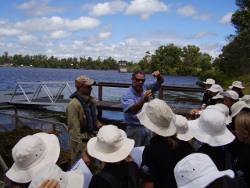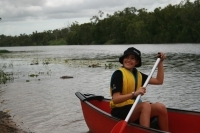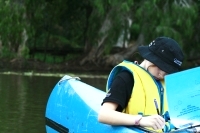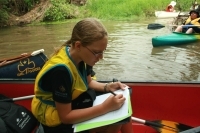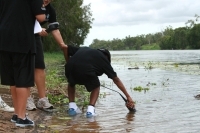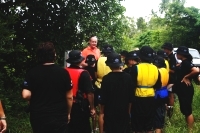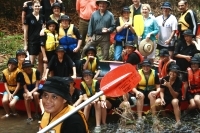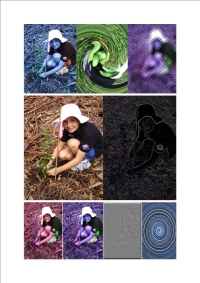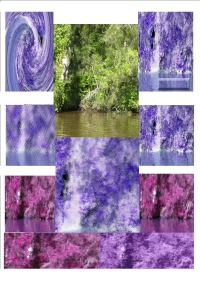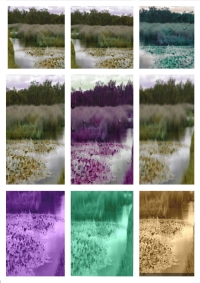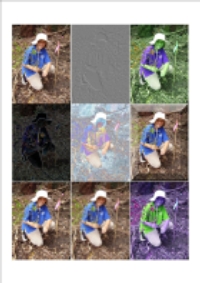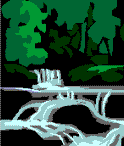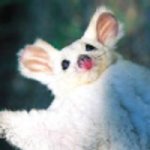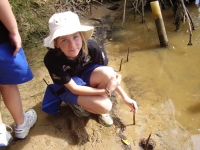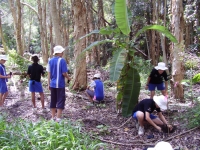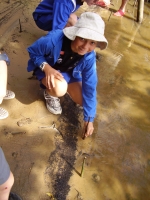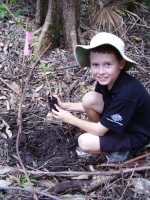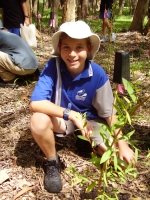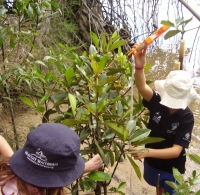|
|
School wetland excursionsYear 7 students from Tewantin State School and Townsville Central State School went on a wetland excursion—the final component of the 10-week field-based wetland curriculum. They put their newly acquired wetland knowledge to the test during the trip, sampling water quality, soil and vegetation, recording site description and evaluating land use issues. View the outcomes of the wetland excursions below. Townsville Central State SchoolWetland excursion photosTewantin State SchoolWetland artWetland blog extractsWetlands excursionOn the 20th of February Year 7’s and their teachers went to Heritage Park, Lake McDonald and Cooroy Sewage Treatment Plant. The reason why we went was so we could compare and test the water in our local wetlands. When we got to Heritage Park we met Phil and Vanessa they are part of the wetlands management team. Vanessa showed us how water is tested in the local area. She used a Quanta, which is a water tester. We tested the temperature, the pH balance, the oxygen level, the conductivity and the turbidity. We recorded our results. (Shown in the table below.) After that we went to Lake McDonald. At Lake McDonald we not only tested the water, but we were introduced to Ross, who operates the Aquatic Weed Harvester. The Aquatic Weed Harvester chops the toxic weed called Cabomba. This weed has taken over Lake McDonald, because someone threw it into the lake when they were removing it from their fish tank, causing it to destroy all other native plants in the Lake. Also when we were at Lake McDonald we tested the water for its water quality.
After that we got back on the bus and went to The Cooroy Sewage Plant. When we were there we looked at all the sewage ponds. The first pond smelt really, really bad. Phil told us that the plants that were in some of the ponds helped to filter the water. The rest of the ponds didn’t smell as bad as the first one. When we finished looking at the ponds we went and sat at a table and we got some brochures about Lake McDonald. Then we got back on the bus and went back to school. I had a great day apart from the smell. By Carlee 1 + 2 = … TREEOn Wednesday 12th of March, Tewantin State School year 7 revegetated a local park by planting 300 trees. They walked to the park in their 'Wetlands' shirts. The kids walked 3km from their school to Heritage Park (urban wetland) in the sun with clipboards, drink bottles & their lunches. The park was divided into 3 parts each with 100 holes. The kids were divided up, and started getting really muddy planting different kinds of saplings. The students smiled for the media and washed the mud off themselves before heading home. Report by Eliza. Heritage ParkOn Wednesday the 20th of February 2008 we met Phil (Landcare) and Vanessa (Waterwatch) at Heritage Park. We started taking notes. Wetlands provide habitat for fauna and flora (animals and plants). A catchment is like a giant bath tub the water runs down the mountains and into the river and eventually flows into the ocean. There are two catchments in this area the Noosa River and the Mary River. The Noosa River is about 60km in length. The Mary River is 240km more than 4 times the length of the Noosa River. At Heritage Park a section was closed for plant vegetation. There were trees at Heritage Park that were planted 4-5 years ago. pH: Measures the acid in the wetland. Fauna and flora cannot live in the wetland if it is to acidic (0-7) or alkaline (7-14). Too much salt in a wetland can conduct electricity. Phil asked us to draw up a table of the wetland"s temperature, DO (dissolved oxygen), pH, conductivity and turbulence.
DO is usually higher in the afternoon and lower in the morning. We looked at a Cabbage Palm. These Cabbage Palms were about 80 years old. A Eucalyptus Tree (Gum tree) is also known as a Rose Gum. Some people graffiti trees (spray painting, lighting fires and chopping down trees). We got back on the bus and drove to Lake McDonald. By Abigail Wetland poetry
Wetland field trip photosReferences
Last updated: 22 March 2013 This page should be cited as: Department of Environment, Science and Innovation, Queensland (2013) School wetland excursions, WetlandInfo website, accessed 8 May 2025. Available at: https://wetlandinfo.des.qld.gov.au/wetlands/resources/education/blogs.html |

 — Department of the Environment, Tourism, Science and Innovation
— Department of the Environment, Tourism, Science and Innovation

